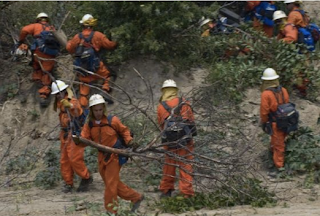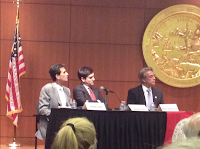Cheauvon, and other honest and accountable formerly incarcerated people who are looking for work and want to take responsibility for their lives, need YOUR help!
AB 218, otherwise known as the Ban the Box initiative, would prohibit state or local agencies from asking an applicant to disclose information regarding a criminal conviction until the agency has determined the applicant meets the minimum qualifications for the position. From the reentry perspective, it is a laudable initiative that gives formerly incarcerated people a fair shot at being considered for a position on their merits and qualifications.
The bill failed on the Senate Floor yesterday by a vote of 20 to 16, but was granted reconsideration. Which means there is something you can do to make things right. It’s the last day of the Senate session and this is an opportunity to pass this important bill.
Call one of these senators (highest priority are Senators Pavley and Roth):
Fran Pavley: Phone: (916) 651-4027 District 27 incorporates and maintains the eastern portion of Ventura County, which includes the cities of Simi Valley, Moorpark, Thousand Oaks, Agoura Hills, and Westlake Village. It also includes the coastal area extending from Leo Carrillo State Beach to Malibu and on to Topanga Canyon. Additionally, it captures the communities of Calabasas, West Hills and a portion of Santa Clarita in Los Angeles County. It maintains the coastal mountain range and watershed. This district reunites the cities in Eastern Ventura County above the Conejo Grade and combines them with communities in the greater Santa Monica Mountain area and the western San Fernando Valley along the Highway 101 and 118 corridors.
Richard Roth: Phone: (916) 651-4031; District 31: Riverside County including the Cities of Corona, Eastvale, Jurupa Valley, Moreno Valley, Norco, Perris and Riverside, Fax: (916) 651-4931
Hannah-Beth Jackson: Phone: (916) 651-4019; District 19 Santa Barbara County and a portion of Ventura County.Santa Maria, Buellton, Solvang, Goleta, Santa Barbara, San Buenaventura, the Santa Clara Valley (Santa Paula, Fillmore, Piru) and Oxnard, Port Hueneme and Camarillo on the southeastern border. Agricultural nexus between the Santa Clara Valley, Oxnard plains, and the Santa Maria area.
Jerry Hill: Phone: (916) 651-4013; District 13; Atherton, Belmont, Brisbane, Burlingame, East Palo Alto, Foster City, Half Moon Bay, Hillsborough, Los Altos, Los Altos Hills, Menlo Park, Millbrae, Mountain View, Pacifica, Palo Alto, Portola Valley, Redwood City, San Bruno, San Carlos, San Mateo, South San Francisco, Sunnyvale, Woodside and parts of unincorporated San Mateo County and unincorporated Santa Clara County.
Here’s a suggested script for your call:
“I live in the Senator’s district and I support AB 218. I want to urge the Senator to pass this bill. This bill is important to our community because … ”
• “it will help reduce recidivism.”
• “it will increase public safety by making sure people with records have a chance at being employed.”
Use your own words and reasons.
If the idea is to make folks with criminal records contributors, rather than burdens, on the economy, the way to do it is to at least not make it impossible for them to find work. DO SOMETHING TODAY to help them.








